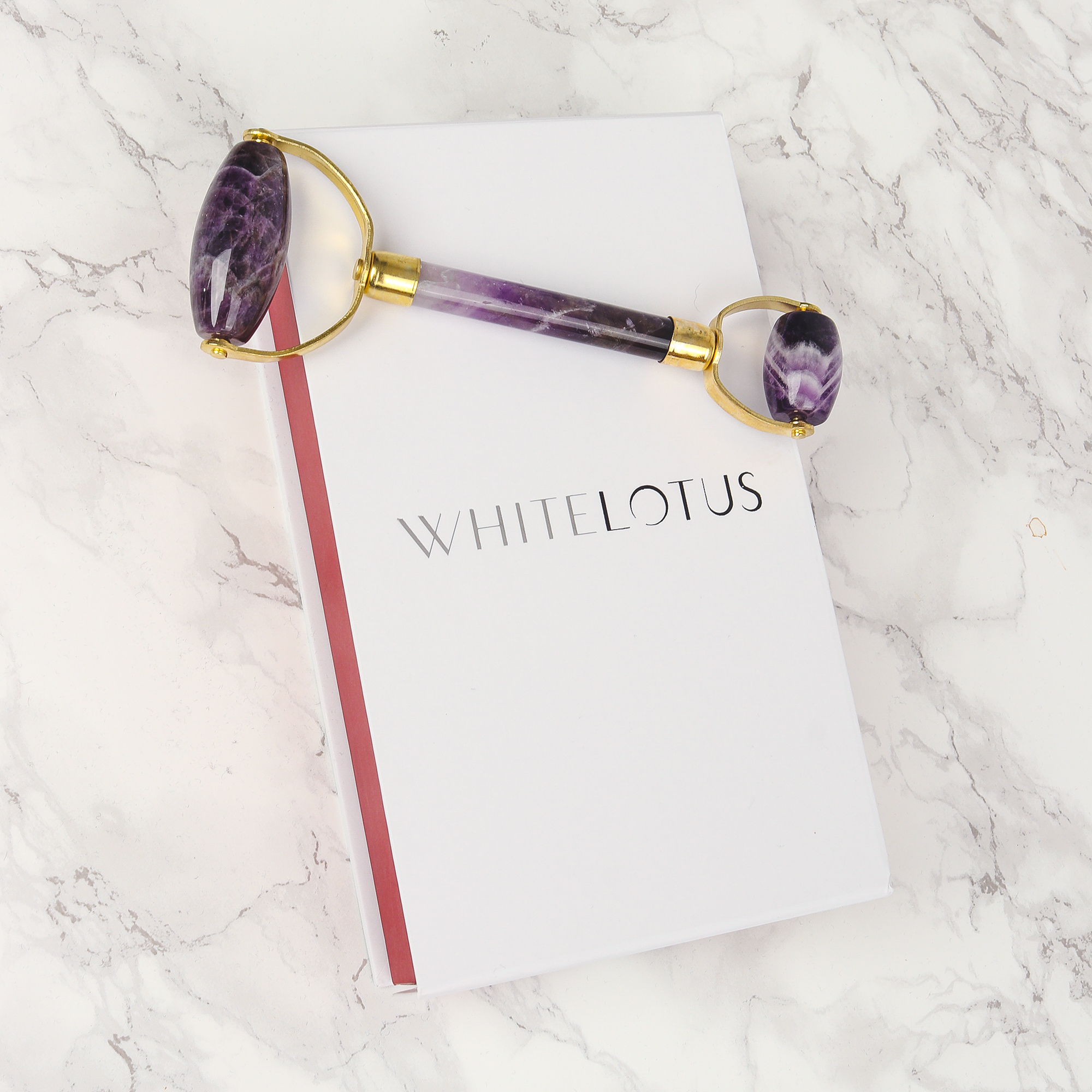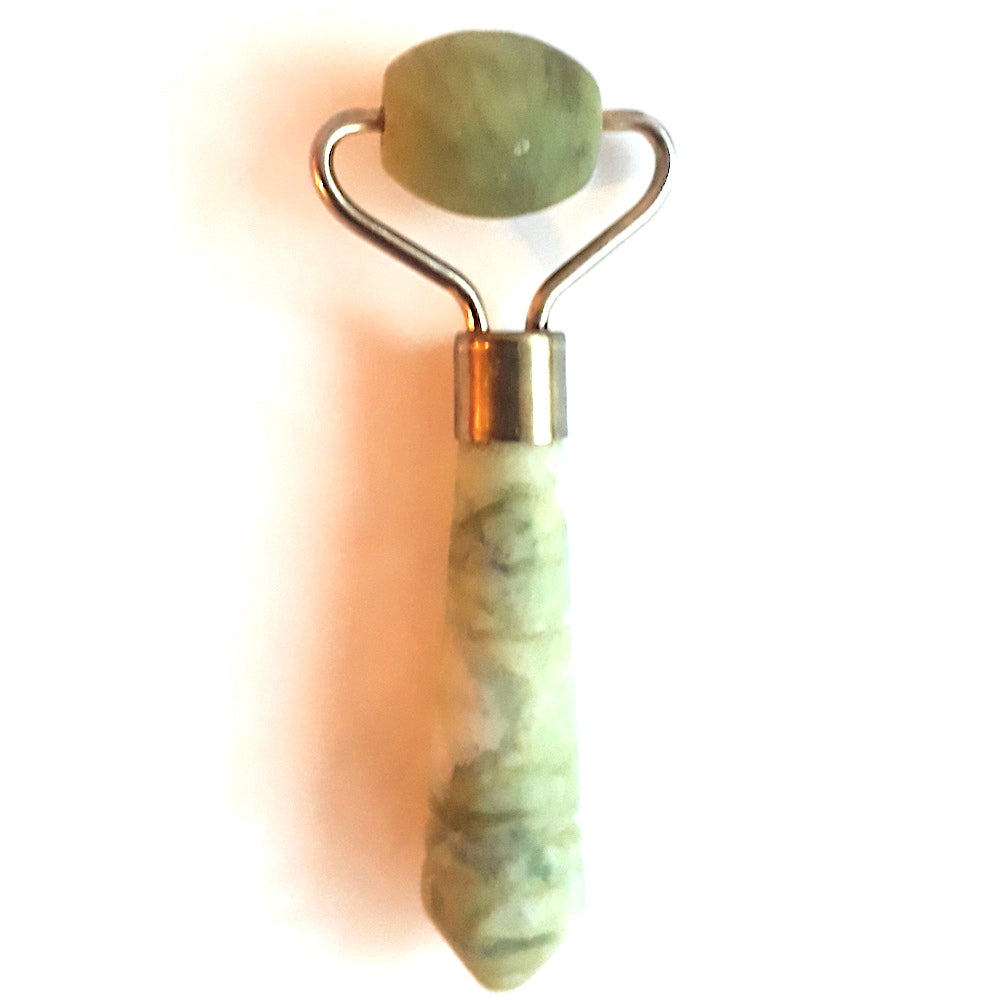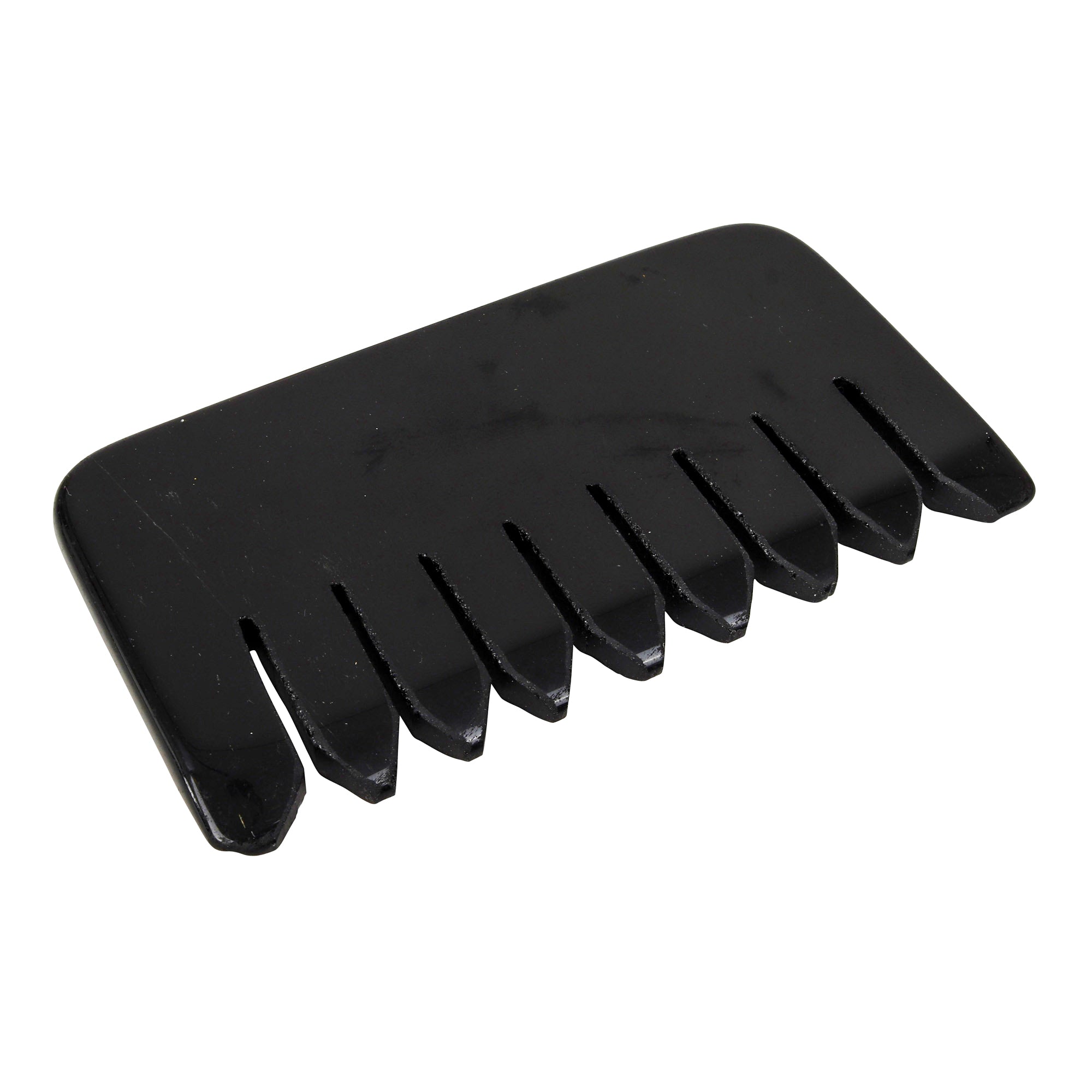
All About Amethyst Crystal
Physical properties of Amethyst
Amethyst is actually a variety of purple quartz. The highest quality amethyst comes from Siberia, Sri Lanka, Brazil and the Far East. Connoisseurs of the crystal consider the ideal colour to be what is called ‘deep Siberian’ which means it has a primary purple hue of around 75% with the remaining colours blue or red depending on the light source.
Amethyst is a form of silicon dioxide and has a hardness rating of 7 on the Mohs scale making it very durable and relatively difficult to carve. It is the presence of manganese in the clear quartz that produces amethyst. Additional amounts of iron then vary the purple colour.
Up until the 18th century amethyst was so rare that it was considered one of the cardinal gemstones along with diamond, sapphire, ruby and emerald. Discovery of large deposits of amethyst in Brazil saw it’s value fall to similar prices to non precious crystals such as quartz allowing its use in crystal rollers, Gua Shas and crystal combs.
The History and Legends of Amethyst
Amethysts was used extensively by the ancient Egyptians as jewellery but it is not until the ancient Greeks that the interesting recorded history really begins.
The word amethystos can be translated from the ancient Greek as “not drunken” The ancient Greeks wore amethyst as they believed it could prevent or protect a person from becoming drunk from alcohol (1). With a hint of excessive optimism wine goblets were often carved from amethyst.
A relic of this belief persists to this day as all Anglican bishops wear an episcopal ring usually set with amethyst as an allusion to the apostles being “not drunk” at Pentecost in Acts 2:15 (2). The Catholic clergy also often wore Amethyst jewels in their crosses as a sign of piety and celibacy.
No ancient Greek myths of the source of amethyst actually exist unlike rose quartz, however the French Poet Remy Belleau writing before 1577 invented a myth of Bacchus the God of wine, grapes and intoxication, pursuing a beautiful maiden called Amethyste.
Amethyste prayed to the Gods to remain chaste. The chaste Goddess Diana answered her prayers by turning her to white stone. Humbled by her sacrifice to remain chaste Bacchus poured wine over the stone as an offering forever dyeing the stone purple.
The Romans later used amethyst in jewellery and symbols for the Patrician or Royal class. The colour purple was always the colour of Royalty in ancient Rome and amethyst was believed to symbolise luxury, wealth and abundance.
This association between amethyst and abundance is also found in the ancient Chinese system of Feng Shui. It is believed that by placing amethyst in the wealth corner of the house it can amplify the flow of wealth to the household.
The believe in amethysts ability to retain a cool head continued into medieval times where soldiers wore amethyst amulets in the belief that it kept them cool headed and helped heal and protect them from injuries(3)
Modern Spiritual Uses of Amethyst
These ancient stories are reflected in the beliefs about amethyst in modern Spirituality. It is considered a strong stone of protection and healing. Its association with the crown chakra means many people use amethyst as a crystal to enhance clarity of mind during meditation.
Many people wear amulets of amethyst believing they protect them from the negative thoughts of others and allow them to stay calm and clear headed in abrasive situations.
Many groups believe it is such a strong stone of protection that unlike other crystals it does not require cleansing regularly.
Its ability to enhance clarity of mind or sobriety also means it is believed to help relieve stress and anxiety.
Its connection with abundance and prosperity means it is considered especially effective at relieving work related stress that may be inhibiting progress.
Spiritualists often recommend this stone to people retain a clear head and better thrive in business situations that require cool thinking and calm decision making connecting the beliefs about its ability to protect, clear the mind and attract wealth.
Amethyst Rollers, Gua Sha and Amethyst Combs
Amethyst is more expensive and harder to carve than rose quartz, jade or tourmaline. Its brittle nature leads to a much higher breakage rate during carving leading to higher creation costs.
Most producers of amethyst beauty tools chemically treat their amethyst first for this reason as it dramatically reduces expenses. This chemical treatment changes the physical properties of the amethyst and will therefore eliminate any of the spiritual benefits listed above that you may be hoping to receive from purchasing an amethyst beauty tool.
We would recommend purchasing an amethyst beauty tool instead of a different crystals if you are looking for some or all of the changes listed above or if you are particularly attracted to the multi shaded hues of the crystal.
The White Lotus beauty tools are exceptionally well made and come with a normal use lifetime guarantee. That means you will be looking at and using them for a very long time! It is important to buy one you love that makes you feel good about using it.
Using tools like this should not be a chore it should be something you enjoy and look forward to as a moments peace to recharge yourself during a busy week. The fact that unlike many beauty treatments these tools are very relaxing and feel great will make this a lot easier!
Conclusion
Amethyst is a crystal of protection that can enhance clarity of mind and has always been associated with attracting wealth. A White Lotus amethyst roller, Gua Sha or amethyst comb is right for you if you are looking for these properties and can see yourself being happy with the appearance and feeling of theses genuine crystals for decades to come.
Learn More
Create Your Own Unique Crystal Facial
1. Rudler, Frederick William (1911). "Amethyst" . In Chisholm, Hugh (ed.). Encyclopædia Britannica. 1 (11th ed.). Cambridge University Press. p. 852.
2. Bays, P. (2012). This Anglican Church of Ours. Woodlake Book. p. 136.
3. George Frederick Kunz (1913), Curious Lore of Precious Stones, Lippincott Company, Philadelphia & London, p. 77


